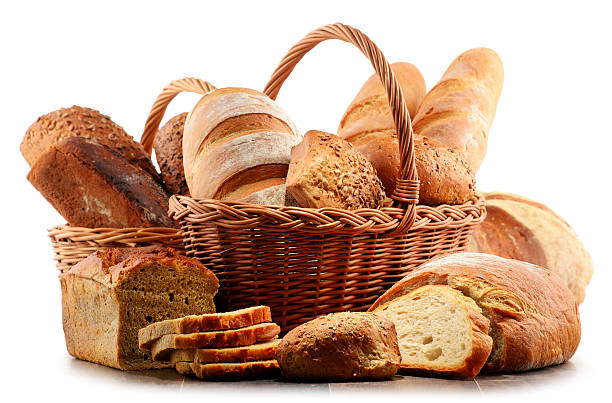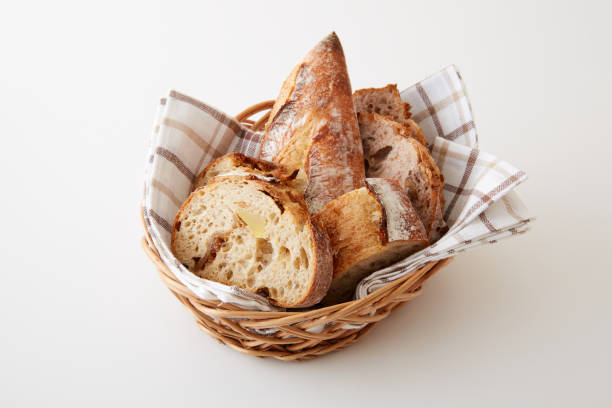When preparing dough for baking, a basket for bread rising plays an essential role in shaping and developing structure. It provides the dough with a stable environment during its final fermentation, helping it hold its shape and avoid spreading flat. Traditionally made from natural materials like rattan, these baskets allow the dough to breathe, which contributes to a crispier crust. They also leave behind a beautiful spiral or flour pattern that adds rustic charm to the finished loaf. Using a basket encourages the dough to rise upward rather than outward, resulting in a professional appearance and consistent texture. Bakers who use proofing baskets also notice that the dough develops a slightly firmer surface, reducing stickiness and making it easier to score before baking. The process is simple yet transformative, ensuring that bread retains its structure while still achieving the open crumb and soft interior desired in artisanal loaves. This makes them indispensable for both professional bakers and passionate home bread makers.
Why Bread Structure Depends on Proper Proofing
Bread proving is more than just letting the dough swell; it is a scientific procedure that changes the flavor, texture, and crust of the bread. When proving, yeast eats sugars and makes carbon dioxide, which makes bubbles that grow in the dough. A basket holds the dough up while the bubbles form, which keeps it from falling apart and helps it rise evenly. If you don't proof bread correctly, it can get thick, sticky, or deformed. Using a basket makes ensuring that the dough rises properly, with air pockets evenly spaced throughout for a light, airy inside. Proofing baskets also assist keep the temperature and moisture levels just right, which can make the smell and taste better. This phase is very important for sourdough since long fermentation gives it the tangy flavor that bakers want. Bakers may make their bread go from ordinary to spectacular by paying attention to how they proof it.
Picking the Right Material for Proofing Baskets
The type of basket you use has a direct effect on how the dough rises. Rattan is the most popular choice since it is light, airy, and naturally absorbs a little flour, which keeps things from sticking. Wooden pulp and wicker are also common choices, although they may not last as long or need as much care. Some bakers today choose plastic baskets because they are easier to clean, although they may not let as much air flow as natural fibers. Think about how you like to bake and how you like to clean when you choose a basket. Natural materials usually give bread a more rustic aspect and help it rise better, while synthetic materials are easier to use and keep clean. A good basket will make sure that every time you bake, you get the same results.

How to Get Your Basket Ready for Its First Use
Before you can use a proving basket with dough, you need to have it ready. Flour is the first thing you need to do to season the basket. This makes a thin layer that keeps the dough from sticking. Using rice flour or a mix of wheat and rice flour to dust is very good because it doesn't hold moisture as well. Some bakers like to use a cotton liner that can be taken out and washed after each usage. To get ready, just put a lot of flour inside and shake out the extra. This first step is very important because if the basket isn't seasoned, the dough could break or lose its shape when you move it to the oven. Baskets get organically seasoned with use, which makes them work even better over time.
Taking Care of Your Basket for the Long Term Use
Taking good care of a proofing basket will make it last for years. After baking, use a dry brush to gently brush away any extra flour. Don't soak natural rattan baskets in water because this can make the strands weaker and cause mold to grow. If you need to, let the baskets dry completely in the sun to get rid of any moisture. You should wash liners often and let them dry all the way before using them again. If you take care of your baskets on a regular basis, they will stay strong and keep giving the dough the structure it needs to make great bread.
The Beauty of Using Proofing Baskets
One perk of proofing baskets that people frequently forget about is how they make bread look better. The spiral ridges or flour patterns left behind give the loaves a handmade look that makes them stand out. This ornamental piece gives a professional touch and makes handmade bread look like it came from a bakery. This touch makes the bread seem better and shows off the baker's skill for those who sell it or share it with friends and family. The little marks left by a proving basket make even simple dough recipes look more complicated.
Things People Do Wrong When Using Proofing Baskets
Many novices have trouble with things like dough sticking to the basket or getting flat. Not applying enough flour to cover the surface is the most typical mistake. This makes the dough stick and tear. Another common problem is moving the dough too soon, before it has finished proving. This stops it from rising and getting the right texture. Overproofing is also a problem because dough can lose its shape if it is left in a basket for too long. Bakers may make sure they always succeed by knowing about these problems and making changes as needed.

Different Loaves Need Different Basket Sizes and Shapes
There are round, oval, and oblong proofing baskets, and each one is best for a different kind of bread. For classic boules, round baskets are best. For batards or sandwich loaves, oval or rectangular baskets are best. Choosing the right size makes sure that the dough rises without spilling over and makes the loaf style you want. Bakers usually have a lot of various kinds of baskets on available so they may use them for different recipes and events.
Getting the right fermentation to improve flavor
The way dough rises in a basket has a direct effect on how it tastes. Yeast and bacteria can develop tastes better when they are rising steadily and with support. protracted proving times in baskets are especially good for sourdough because the regulated form keeps it from collapsing during protracted fermentation. The outcome is bread that looks good and tastes great in a lot of different ways.
The Importance of Steam in the Last Baking
Proofing baskets do their job before baking, but the last stage, steaming in the oven, is what makes the process complete. When you proof the dough correctly, it will be able to expand when it is heated and steamed. This lets the crust grow wonderfully without breaking or falling apart. Using both proofing and baking methods makes bread that is soft on the inside and crusty on the outside.
A Comparison of Cloth Liners and Bare Baskets
Some bakers like to use baskets without any liners, only sprinkled with flour, while others like to use cloth liners to make cleaning up easier. Liners can make the surface smoother and less likely to cling, but they might make the spiral design less visible. On the other hand, not using a liner makes the basket's imprint bigger, but you have to be very careful when flouring it so it doesn't cling. Both options work well, and the baker's style and intended result will determine which one they choose.

Mastering Artisan Bread with Confidence
For anyone passionate about artisan baking, mastering the use of proofing baskets is essential. These tools not only provide structure but also add beauty and tradition to the bread-making process. Consistency in shaping, controlled fermentation, and decorative imprints all elevate the final product. By practicing regularly and refining techniques, bakers can confidently create loaves that rival professional bakery results. Learning about using proofing baskets transforms bread making from a simple task into an art form that combines science, craft, and creativity.
Conclusion
Bread baking is both a science and an art, and the proofing stage is at the heart of its success. A reliable proofing basket ensures dough develops properly, holds its shape, and transforms into a beautiful finished loaf. From choosing the right material to maintaining it for long-term use, every detail contributes to the outcome. Patterns left behind on the bread add artisanal appeal, while the structure provided by the basket ensures even texture and rise. For bakers who want to achieve consistency and perfection, understanding the importance of proofing baskets is crucial. By investing in quality tools and learning the correct techniques, the bread-making experience becomes more rewarding. With thoughtful practice and trusted tools like those offered by Abioto, anyone can bring professional results into their home kitchen.








